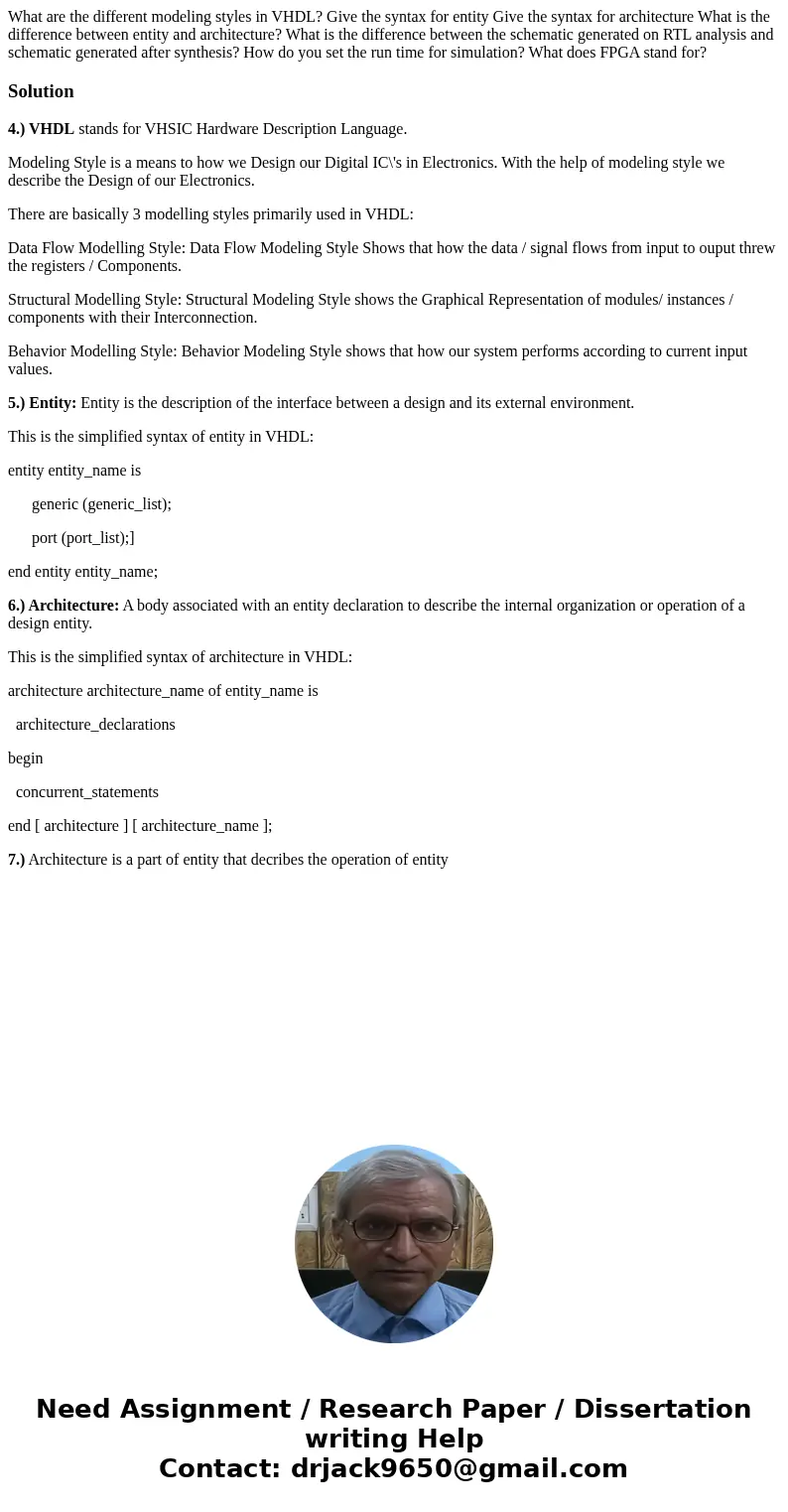What are the different modeling styles in VHDL Give the synt
Solution
4.) VHDL stands for VHSIC Hardware Description Language.
Modeling Style is a means to how we Design our Digital IC\'s in Electronics. With the help of modeling style we describe the Design of our Electronics.
There are basically 3 modelling styles primarily used in VHDL:
Data Flow Modelling Style: Data Flow Modeling Style Shows that how the data / signal flows from input to ouput threw the registers / Components.
Structural Modelling Style: Structural Modeling Style shows the Graphical Representation of modules/ instances / components with their Interconnection.
Behavior Modelling Style: Behavior Modeling Style shows that how our system performs according to current input values.
5.) Entity: Entity is the description of the interface between a design and its external environment.
This is the simplified syntax of entity in VHDL:
entity entity_name is
generic (generic_list);
port (port_list);]
end entity entity_name;
6.) Architecture: A body associated with an entity declaration to describe the internal organization or operation of a design entity.
This is the simplified syntax of architecture in VHDL:
architecture architecture_name of entity_name is
architecture_declarations
begin
concurrent_statements
end [ architecture ] [ architecture_name ];
7.) Architecture is a part of entity that decribes the operation of entity

 Homework Sourse
Homework Sourse